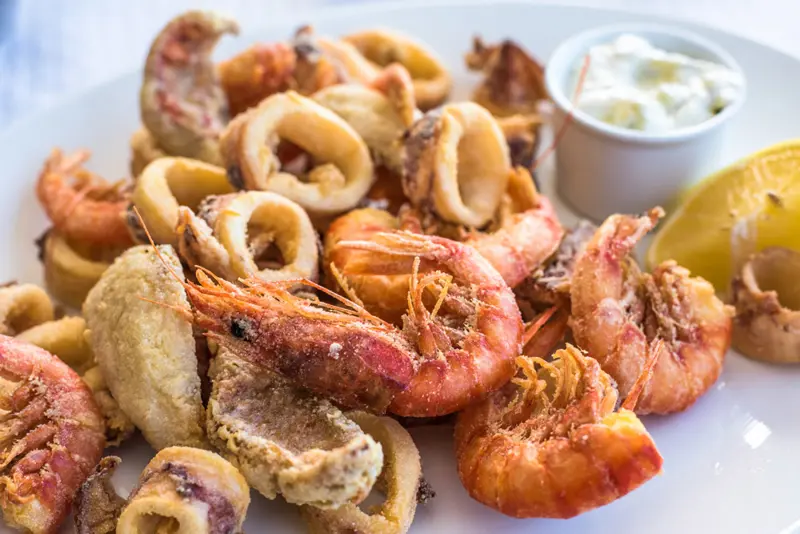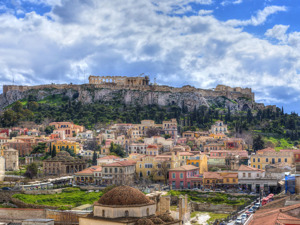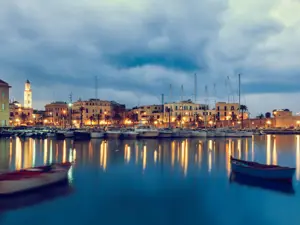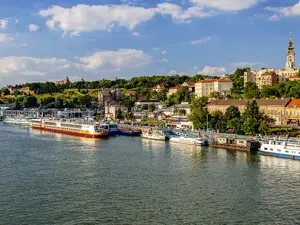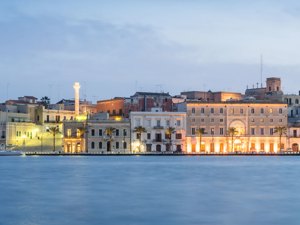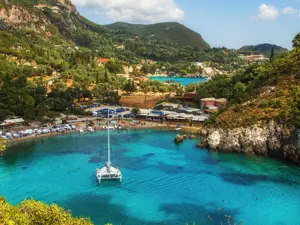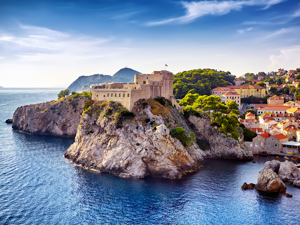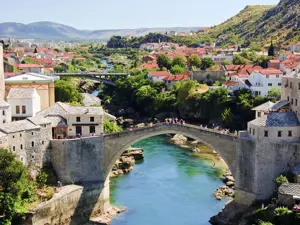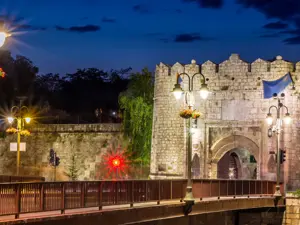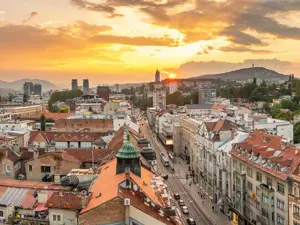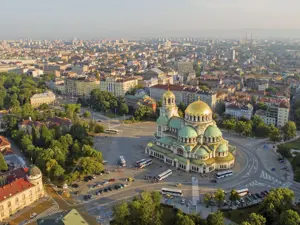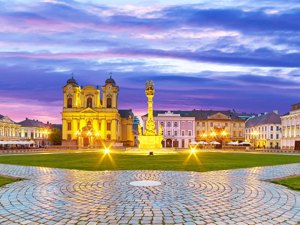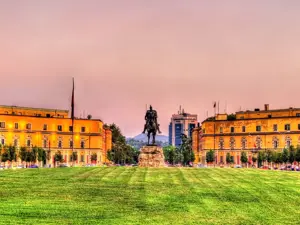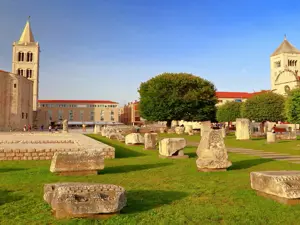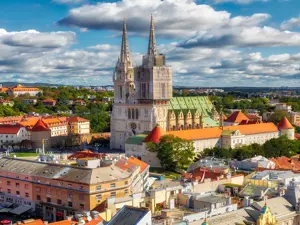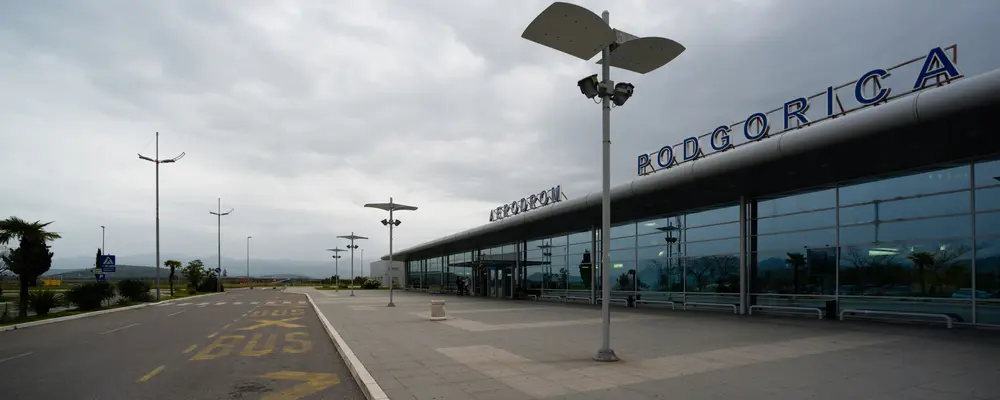The capital of Montenegro between history and modernity
Since the Middle Palaeolithic era, Greeks, Illyrians, Romans, Huns, Goths, Slavs, Byzantines and Ottomans have left their mark on the city of Podgorica, which was built on the foundations of these ancient settlements. The city began to grow in 1326; in 1455 the Turks conquered the Fortress of Medun and then in 1474 Podgorica itself, beginning four centuries of Turkish rule. In more recent times, during World War II, Podgorica was bombed and almost razed to the ground. Freed in 1944, it was called Titograd from 1946. In 1992 it was renamed Podgorica and in 2006 it became the capital of Montenegro.
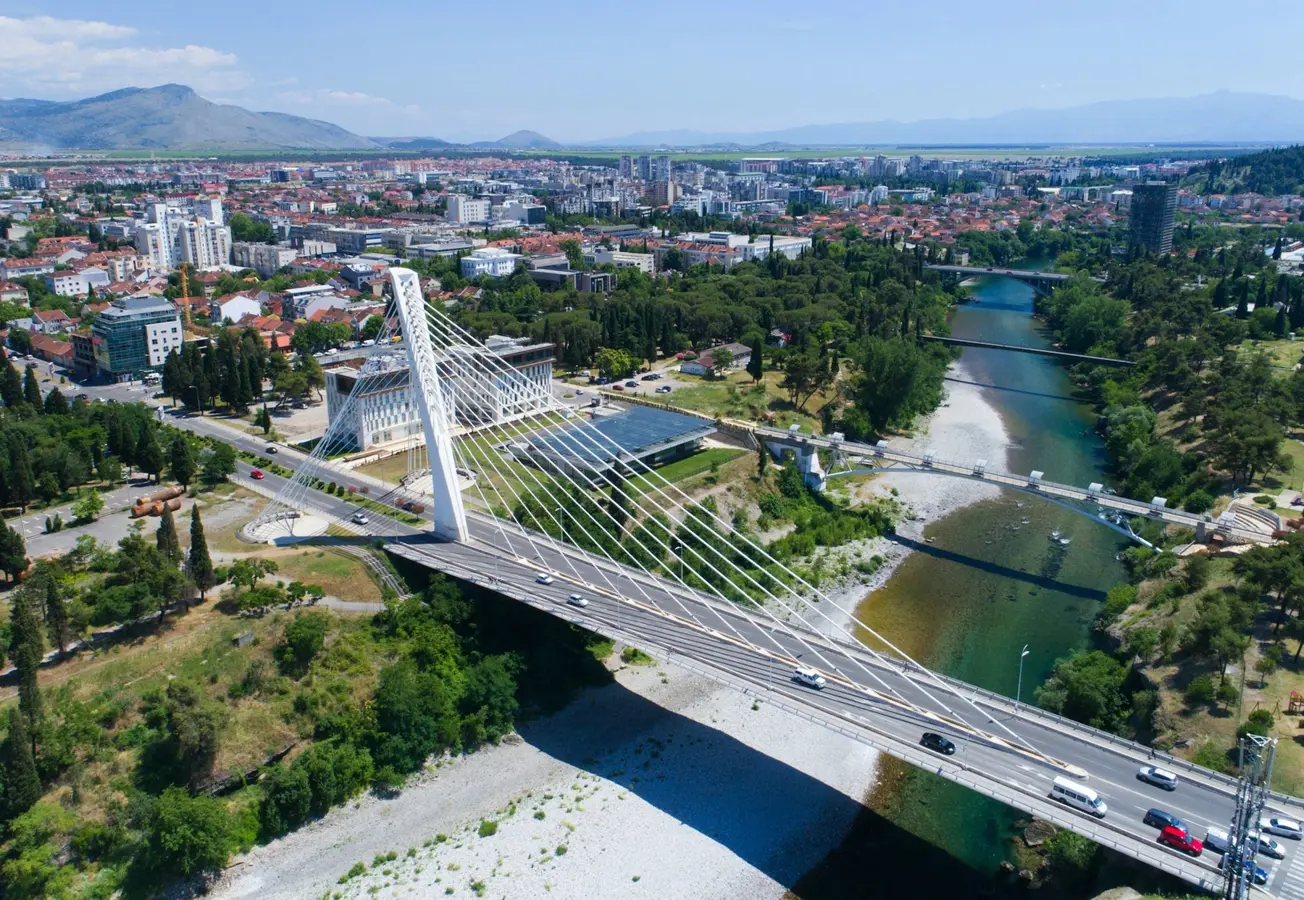
Podgorica is in fact the capital of the youngest country in Europe and is a tourist destination with plenty to offer. Its architectural style primarily reflects the socialist realism of the post-war period, while numerous modern buildings have been personalised and adapted to the challenges of the twenty-first century. However, it also has important archaeological sites, such as those of Doclea (Duklja) and Medun, reminders of ancient times and witnesses of theIllyrian period which saw the settlement of the Illyrian Docleatae and Labeatae tribes.
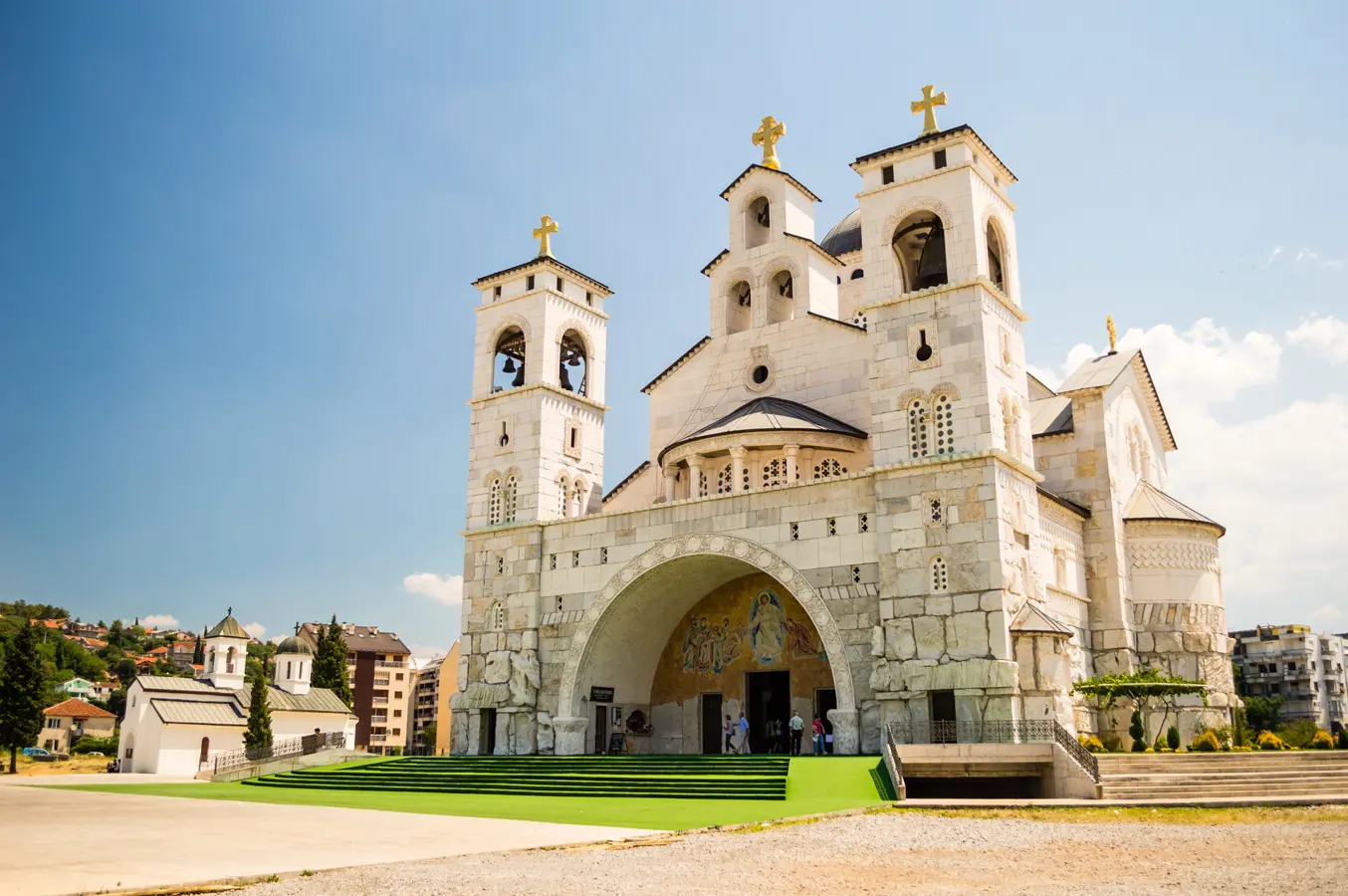
The town centre of Podgorica
The old town centre features important architectural examples of the Ottoman period such as the Clock Tower, the Old Bridge over the Ribnica dating back to the fifteen century and the remains of the ancient fortress. Throughout the city there are churches, monasteries and places of worship such as the monumental Cathedral of the Resurrection of Christ, the city’s main religious building, construction of which began in 1993. It features a dome topped by a gold cross and is decorated inside with mosaics and frescoes on a golden background.
Theaters and museums of Podgorica
Don’t miss a visit to the National Theatre and Podgorica City Museum, which preserves Podgorica’s rich heritage with exhibits of archaeology, ethnography, history and culture, the Natural History Museum which displays the flora and fauna of Montenegro, the M. Miljanov Museum and the Centre of Modern Arts in Kruševac Park.
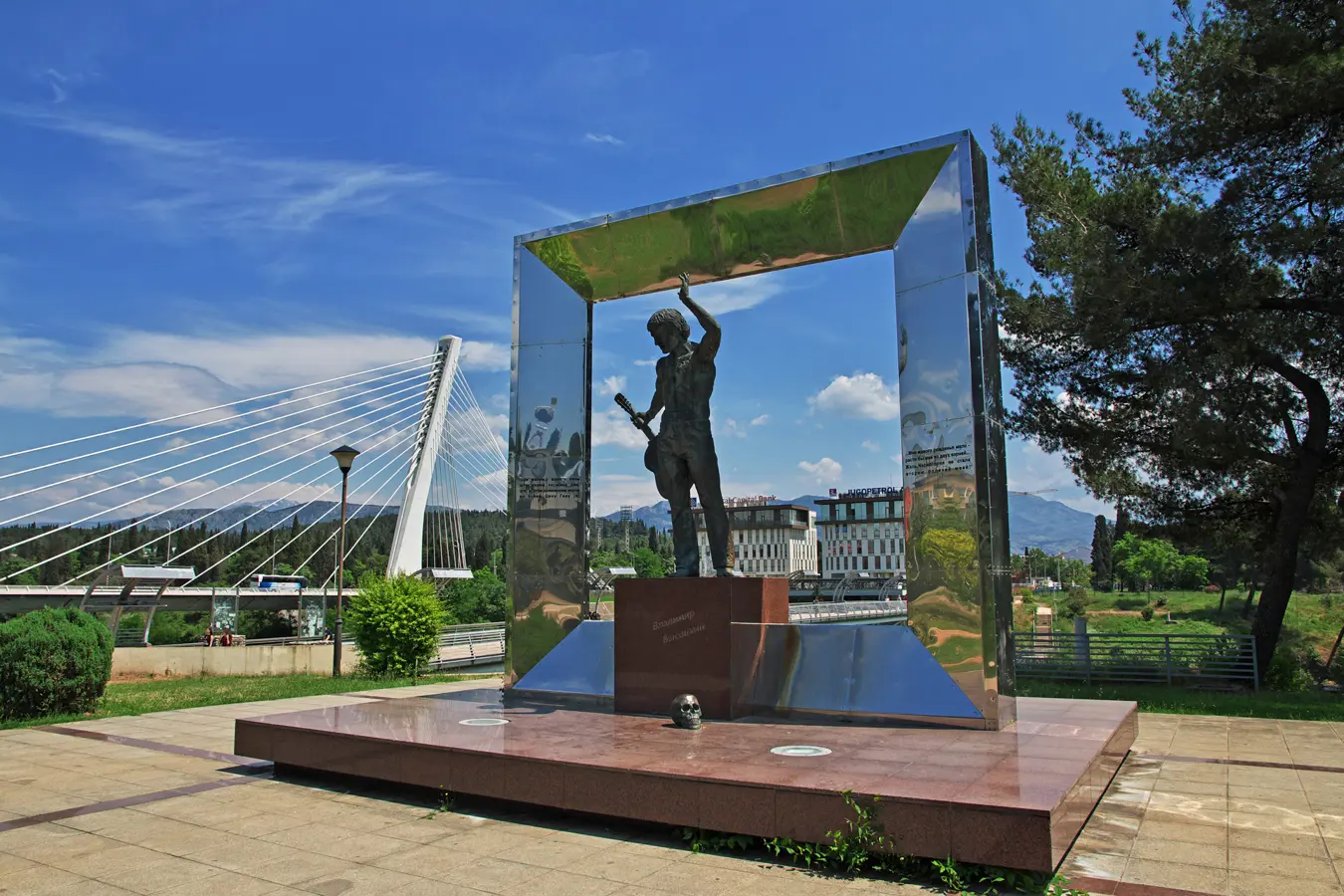
Its ideal position in the Zeta Valley and on the banks of the River Morača, symbol of the capital and the largest river running through the city, makes it easy to access the Adriatic Coast. Podgorica offers the opportunity of enjoying both sea and mountains, being only an hour from the sea and close to mountains that exceed altitudes of 2,000 metres, rewarding visitors with the perfumes of the Mediterranean and the freshness of the peaks.
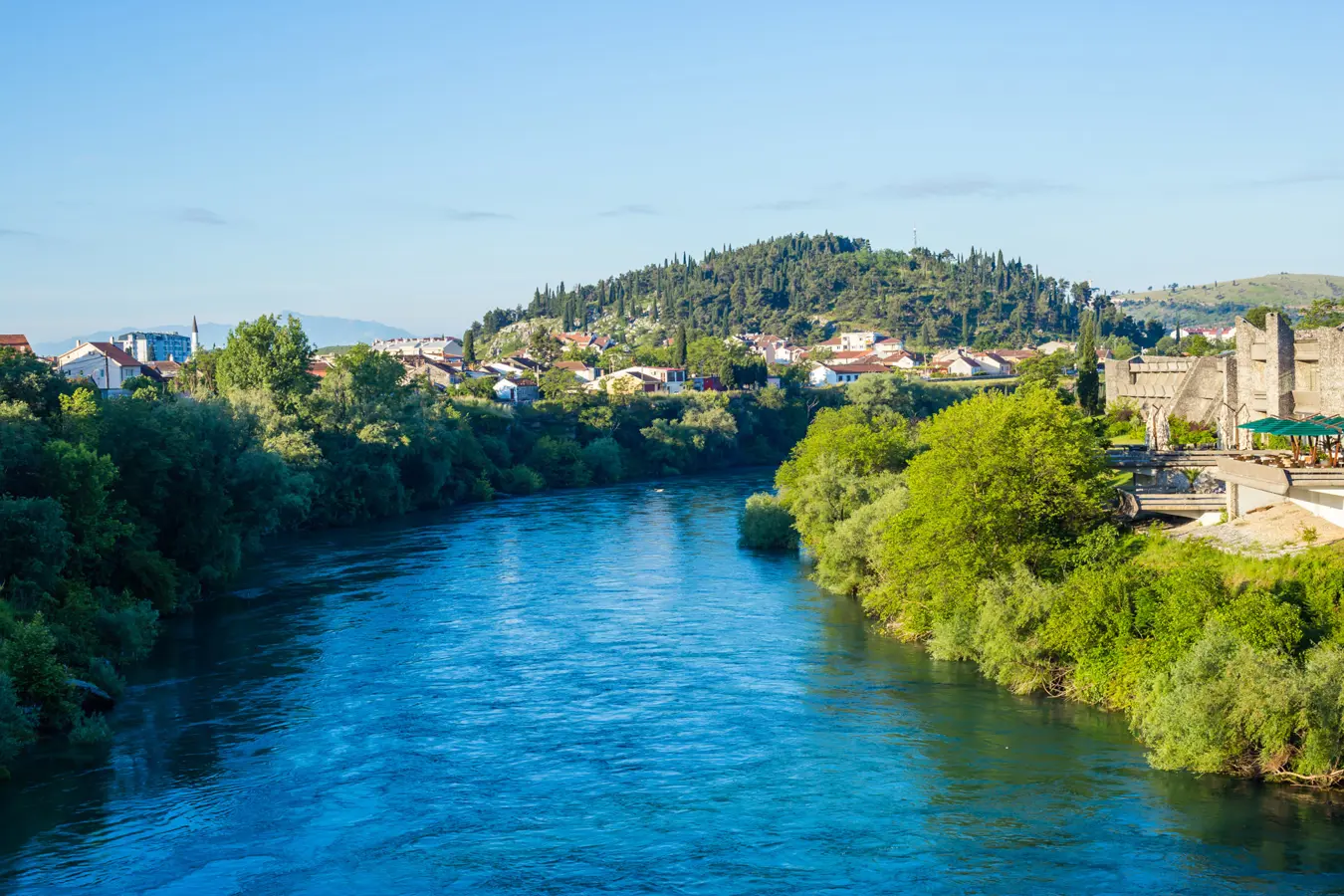
There are also two national parks in the Podgorica region: the fertile valley of Lake Skadar and Prokletije and two interesting canyons of the rivers Morača and Cijevna. Thanks to these beautiful natural landmarks and unspoilt biodiversity, a holiday in Podgorica can also be very active, offering the opportunity ofpractising activities such as trekking, mountain biking, birdwatching, climbing and kayaking
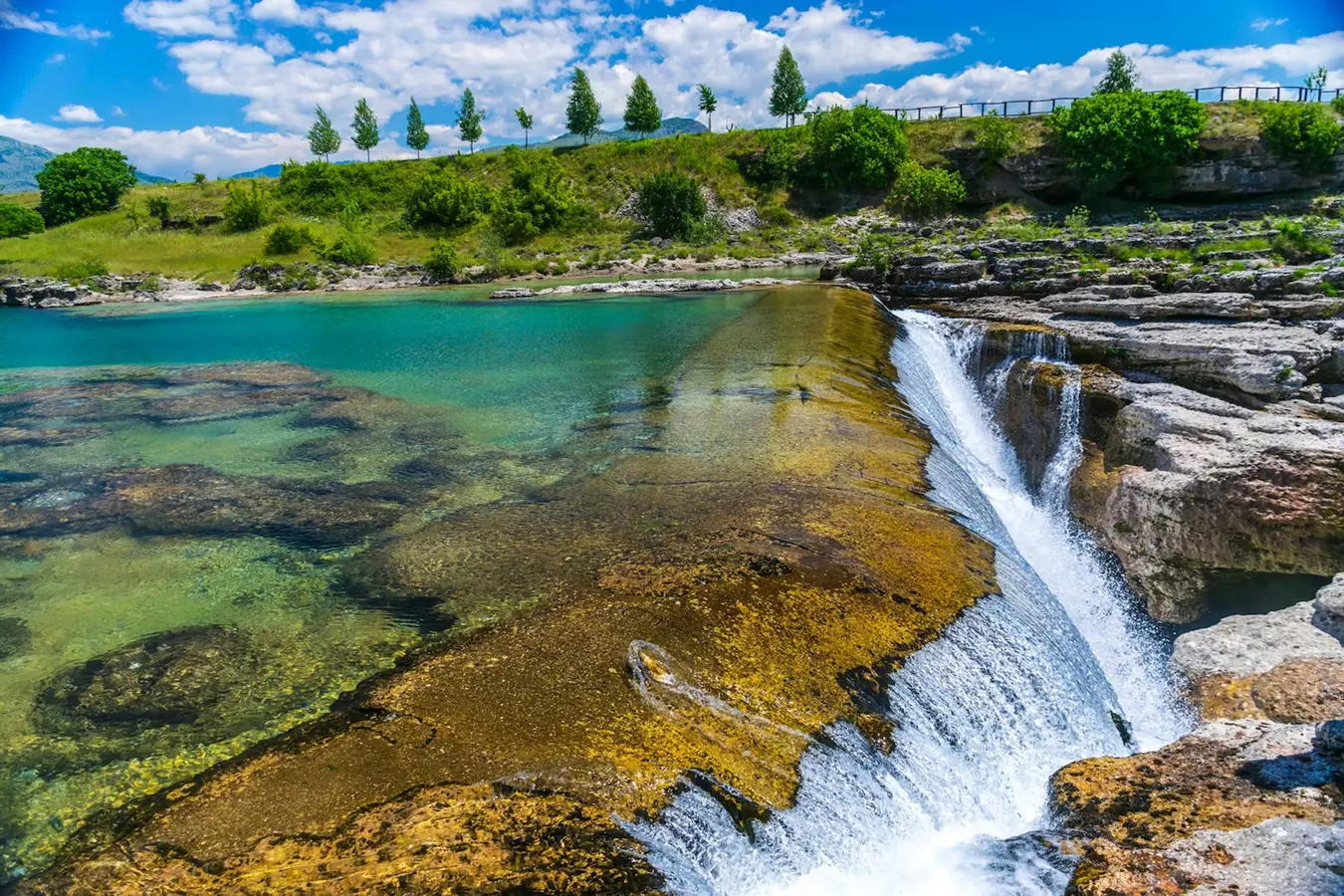
Different areas of the city are excellent for shopping and offer a selection of shops for all tastes: clothing of famous brands in George Washington Boulevard, Sloboda Street, Hercegovacka and Ulica Slobode and book shops and galleries in Njegoševa Street, as well as shopping centres such as Delta City.
With its wide boulevards lined with bars, restaurants and shops, it is a hospitable, open and dynamic city and thanks to its mild climate can be enjoyed all year round – an average of 135 days of sun a year make Podgorica the city of the sun.
Traditional dishes of Podgorica
The city of Podgorica offers a variety of culinary specialities containing vegetables, meat and fish based on Mediterranean, national and continental cuisine and a rich selection of quality local wines such as Vranac, which can be tasted in local wineries (Plantaže), as well as Nikšicko beer and grape brandy which pair well with raw ham, goat’s cheese and tomatoes. Other food to try are grilled lamb or goat’s meat and boiled, fried or grilled fish, all local dishes.
Text by Alisè Vitri
Avion Tourism Magazine
Photos: Copyright © Sisterscom.com / Shutterstock
All rights reserved.
Tourism Board
www.podgorica.travel
www.montenegro.travel
Partnership with Booking.com
Where to sleep in Podgorica
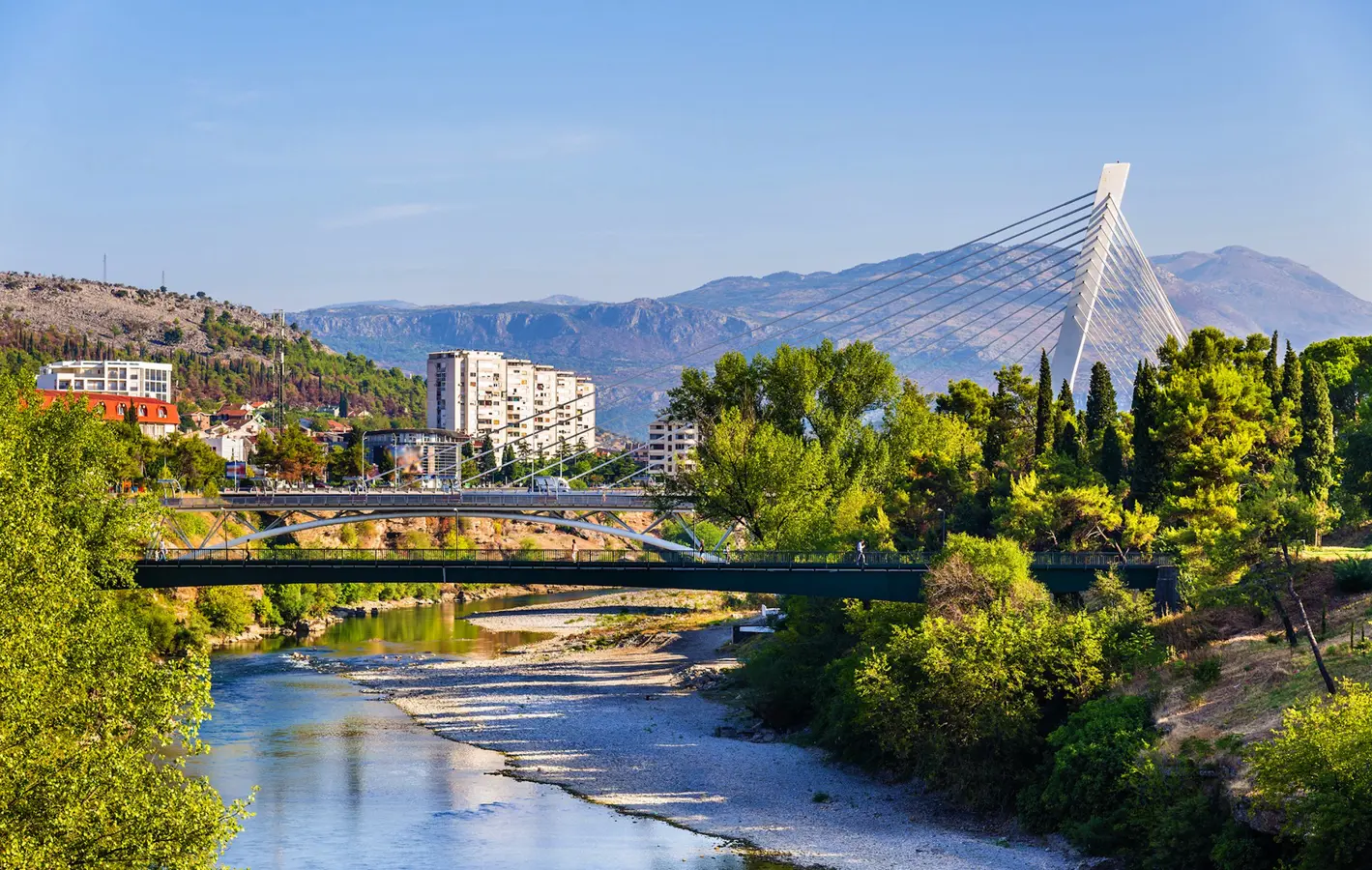
Podgorica is a welcoming city and offers different possibilities for accommodation.
To find the ideal hotel and the best offers you can do a search for the stars but also for districts or landmarks.
STARS
NEARLY
Hotels in the surrounding
AIRPORT
Hotels near the airport
where to go in podgorica
Monuments and Museums of Podgorica
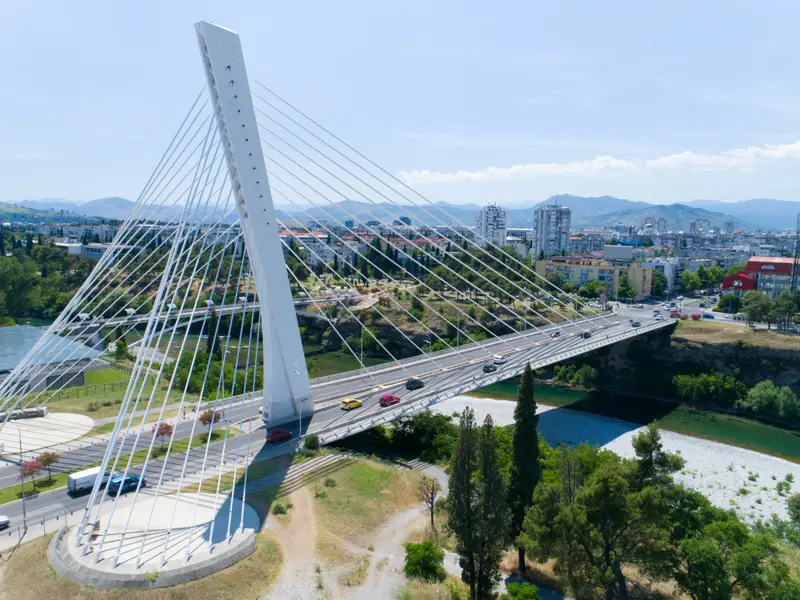
MILLENNIUM BRIDGE
A symbol and the visual identity of the city of Podgorica, the bridge is found on the Morača River. It spans 140 metres and its specially designed pylon soars to an altitude of 57 metres. It is very striking, even at night.
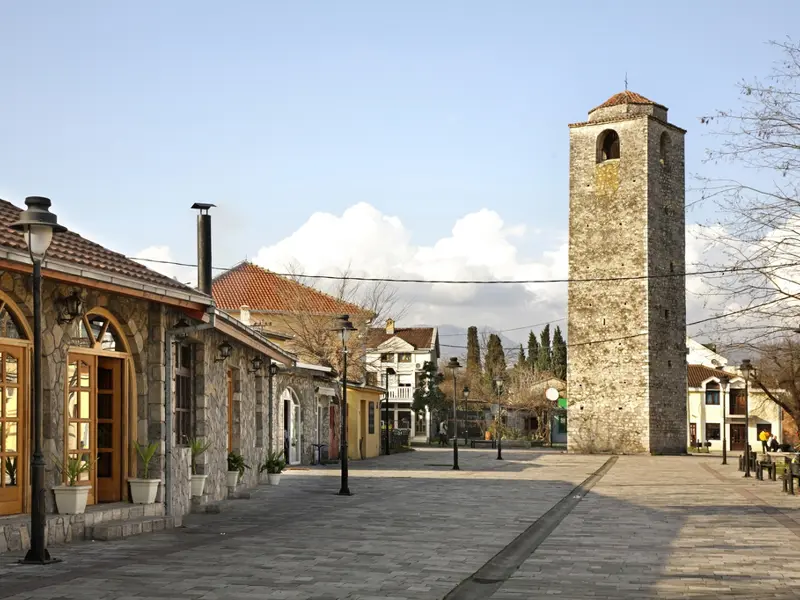
CLOCK TOWER
The Clock Tower of Podgorica (Kula Sahat) is an example of Ottoman architecture. The 16-metre tower dominates the area of Stara Varoš and was built in the eighteen century by Hafis Pasha, who is said to have brought the clock from Italy. For a long time it was the only public clock and is still today one of the points of reference of the city.
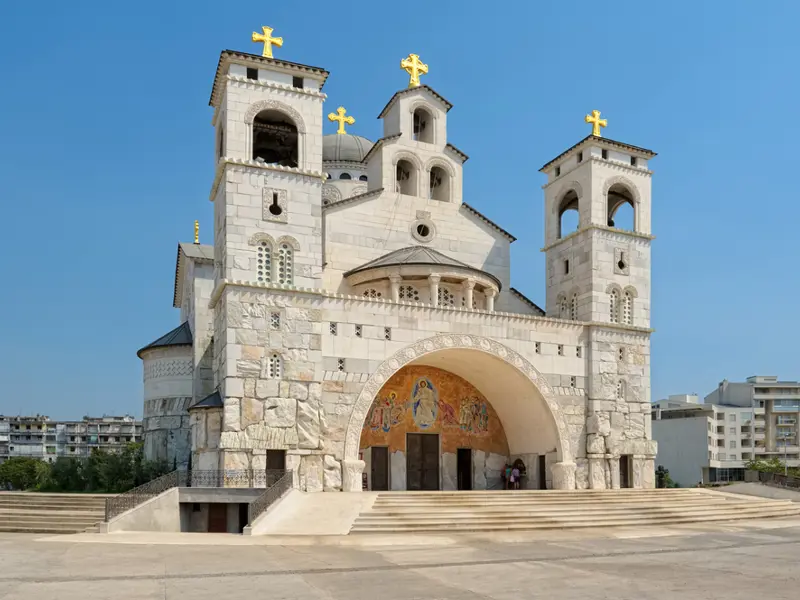
CHURCHES AND PLACES OF WORSHIP
Some of the religious monuments of Podgorica to visit include: the Cathedral of the Resurrection of Christ, which was built in 1993 and is one of the city’s main religious buildings; St. George’s Church, which dates back to the sixteen century and is situated on the forest-covered slopes of the hill of Gorica to the north of the centre: Osmanagic Mosque, which was built at the end of the eighteenth century; theRoman Catholic Church, which was built in 1969; as well as the Monasteries of Dajbabe (1897), Celija Piperska (1637) and Duga Moracka (1755).
ZLATICA MONASTERY
Along the main road to Kolašin, about three kilometres from the centre of Podgorica, in Doljani, stands the Zlatica Monastery, an archaeological site dating back to the fifth-ninth centuries. Within the monastery are the remains of a complex with monumental basilicas, which was built between the fifth and sixth centuries and a church with three apses, which was built between the sixth and ninth centuries. The site dates back to the early Christian period and was rebuilt in 2001.
PETROVIĆ (KRUŠEVAC) PALACE AND THE CENTRE OF CONTEMPORARY ART
The Kruševac Palace complex is the former winter palace of the King Nikola I Petrović. This building was built in the late nineteenth century and was lately the residence of Prince Mirko Petrović-Njegoš. It is located in the Petrović Park in the Kruševac district. The first floor is used as the official exhibition area of the Centre of Contemporary Art of Montenegro, while the ground floor was given to the Petrović-Njegoš Foundation, which was founded by Prince Nikola Petrović, a direct descendant of the royal family.
CITY MUSEUM
The City Museum of Podgorica is divided into four sections - archaeology, ethnography, history and culture - and houses Roman and Illyrian artefacts.
NATURAL HISTORY MUSEUM
The museum illustrates the story of biodiversity in Montenegro, with thirteen sections dedicated to flora, fauna and fossils.
Excursions in Podgorica and in the surroundings
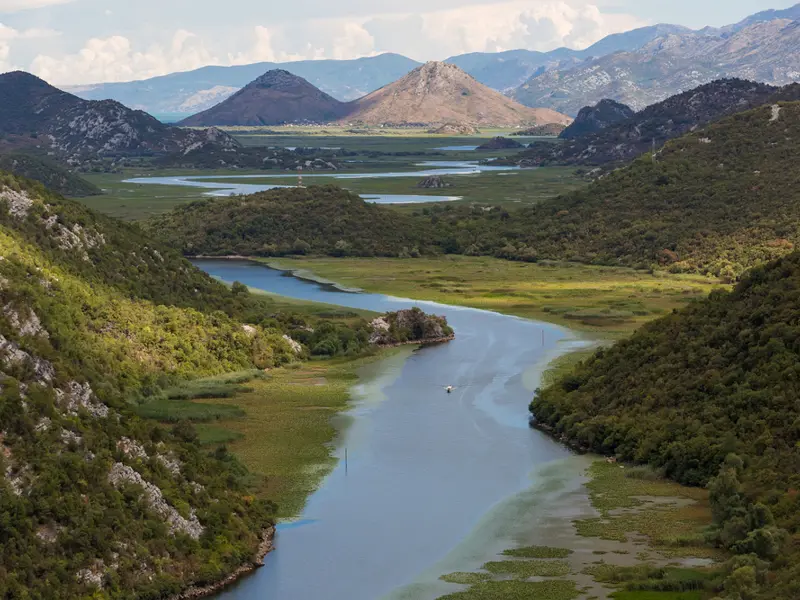
LAKE SKADAR
Lake Skadar is a unique nature reserve. The lake is marked by numerous islets featuring cultural and historic buildings. It is supplied by springs and rivers that provide fresh, clear water and is surrounded by a dense forest. Many species of algae, fish and birds live in or on the lake, including some rare species such as the Dalmatian pelican, pigmy cormorant and whiskered tern.
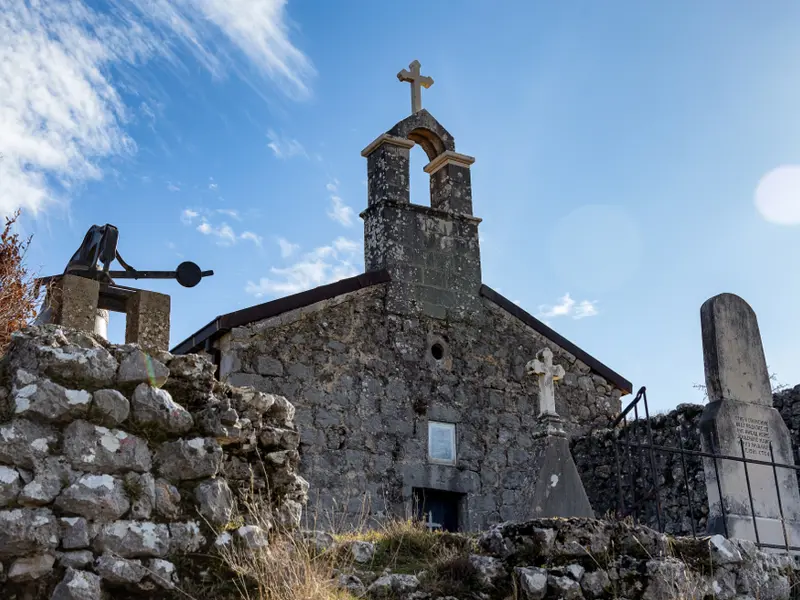
MEDUN
The village of Medun is found approximately 12 kms to the the north-east of Podgorica, in the area of Kuci. It is known for the archaeological site of the ancient fortified Illyrian city of Meteon, the Church of St. Nikola dating back to the eighteenth century and themuseum dedicated to Marko Miljanov, a Montenegrin hero and famous writer, who during the nineteenth century was one of the most important figures of Montenegro’s history.
DOCLEA (DUKLJA)
Doclea, the oldest settlement of the area, is found just 4 kms from the centre of Podgorica and has an ancient layout dating back to the first century A.C. Doclea, known since the times of the Greeks and Romans, was the centre of the medieval Serb state, which existed until the thirteenth century.
Partnership with GetYourGuide
All tours and excursions
News & Useful info
You might be interested in
Destinations found in the vicinity
Other destinations
Airports nearby Podgorica



